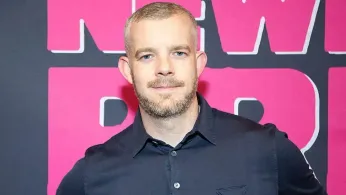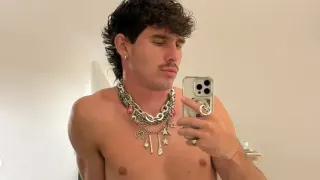
4 hours ago
Russell Tovey Gets Candid: How the AIDS Crisis Shaped a Generation’s Intimacy—and Why He’s Still Untangling It
READ TIME: 3 MIN.
Russell Tovey, one of the UK’s most recognizable queer actors—think “Looking,” “Years and Years,” and “Being Human”—is used to playing characters whose lives are shaped by the world around them. But in a recent interview, Tovey set aside fiction and spoke with searing honesty about how the AIDS crisis shadowed his coming-of-age, shaping not just his identity but his very relationship with touch, trust, and intimacy .
For Tovey—and for so many LGBTQ+ people who grew up in the 1980s and 1990s—the threat of HIV wasn’t just a health warning; it was an ambient fear, woven through every message about sex, desire, and what it meant to be queer. “I’ve been so mixed up with it for so long,” Tovey confesses, capturing a feeling many in the community will recognize: intimacy as both a longing and a source of anxiety .
It’s hard to overstate the impact of the AIDS epidemic on queer culture and psychology. For a generation, every embrace came with a warning; every crush was shadowed by fear. Tovey describes how this “ambient terror,” as activists have called it, didn’t just affect physical health—it carved channels of shame and secrecy into the heart of queer life .
Growing up, Tovey internalized the message that desire was dangerous, that intimacy was a risk. “You don’t realize how much it’s in your bones until you get older and start pulling it apart in therapy,” he admits . For queer folks who came of age in the shadow of Section 28 in the UK, or under the moral panic that swept much of the world, Tovey’s words are a mirror—and a balm.
Tovey isn’t just naming this trauma—he’s actively doing the work to heal it. In his interview, he credits therapy for helping him unpack the “messy” legacy of fear and shame. “You have to do the work to untangle what’s yours and what the world handed you,” he says, pointing to the way queer people often inherit not just pride but pain .
His candor is a reminder that queer healing is communal as much as personal. By talking openly about the weight of history, Tovey invites others to do the same—to swap isolation for solidarity, and shame for shared understanding. “We need to talk about this stuff,” he insists. “Otherwise, we just keep passing it on” .
Tovey’s reflections land at a crucial moment. Advances in HIV treatment and prevention have transformed what is medically possible—but the psychic scars of the crisis remain. For younger LGBTQ+ people, his story is a bridge to a not-so-distant past; for others, it’s a validation of wounds that never fully healed .
But Tovey is also adamant about hope. He’s found outlets in activism, recently voicing support for the UK’s Green Party—calling to mind Harvey Milk’s famous charge: “You’ve got to give them hope” . For Tovey, hope means new conversations about sex, love, and health; it means making space for pleasure and safety, not just survival.
His interview is a call to action for queer media, educators, and allies: keep telling these stories, keep fighting for honest sex education, and keep building spaces where intimacy is not just safe, but celebrated.
What does it look like to reclaim intimacy after a lifetime of warnings? For Tovey, it means unlearning old lessons, embracing messy feelings, and insisting on joy. “Intimacy is political,” he reminds us, “because for so long, we were told it was forbidden” .
His journey is far from over—and that’s exactly the point. In sharing his story, Tovey throws a lifeline to anyone still untangling shame from desire, memory from possibility. The queer community has always turned survival into art, pain into pride. With voices like Tovey’s leading the way, maybe the next generation will inherit a little more tenderness—and a little less fear.






